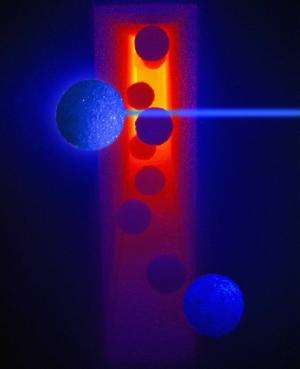Microgravity experiment gets funding, may go to International Space Station

A microgravity experiment designed at The Methodist Hospital Research Institute will be funded by The Center for the Advancement of Science in Space (CASIS) to fly aboard the International Space Station U.S. National Laboratory.
The proposal to study the diffusion of drug-like particles will receive about $200,000 from CASIS, which is directed by Congress to manage, promote, and broker research for the orbiting U.S. National Laboratory. If all goes well on Earth, the experiment will go to the International Space Station as early as 2014.
Principal investigator Alessandro Grattoni, Ph.D., and a team of scientists from Methodist, BioServe Space Technologies at the University of Colorado at Boulder, and NASA Glenn Research Center in Cleveland, Ohio, will study the movement of drug-like particles through tiny channels. The scientists' ultimate goal is improving implantable devices that release pharmaceutical drugs at a steady rate.
Nearly all drugs taken orally spike in concentration, decay quickly, and are only at their peak effectiveness for a short period of time. Grattoni and co-PI Mauro Ferrari, Ph.D., have been working on a solution—nanocapsules implanted beneath the skin that release pharmaceutical drugs through a nanochannel membrane and into the body at a sustained, steady rate. To design better nanochannels for a given drug, Grattoni says he and others need to improve their understanding of the underlying physics.
"Very little is understood about how drug particles behave as they diffuse through tight spaces," said Grattoni, co-chair of TMHRI's Nanomedicine Department. "By improving our grasp on the physics and chemistry, we can develop a model that will make it much easier to design delivery devices for any drug, and speed up the development of these technologies."
Grattoni's group will look at two things they believe play a major role in how particles move through channels—the relative size of particle to channel, as well as charge (plus/minus) interactions between the particle and channel. The fluorescent silicon particles will diffuse into an empty chamber through a long series of narrow channels. Photographs taken periodically with a fluorescent microscope will show the scientists how—and how quickly—the particles move, how charge gradients affect the particles, and the effects of size constraints. The experiment will be performed over three months.
The drugs of interest to Grattoni are tiny (1-6 nanometers) and their movement is not influenced by the effects of gravity, but they're too small to be seen or tracked with microscopes. Much larger particles (1 micron, or 1,000 nanometers) can be seen and tracked, but at such sizes, gravity matters. By removing gravity from the picture, Grattoni's group will be able to study the movements of larger particles that can, they believe, mimic the behavior of drug molecules.
"Based on how you configure the nanochannels, the drug is released at exactly the rate that you want it to," Grattoni said. "This is an alternative to the way the drugs are currently received by patients, often orally or intravenously, in which the drug's levels can spike to near-toxic levels early on, then approach therapeutic levels for a short period, then trail off to levels that are no longer effective, requiring a second administration."
Provided by The Methodist Hospital System


















